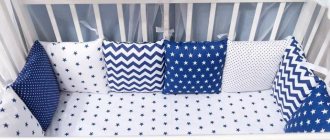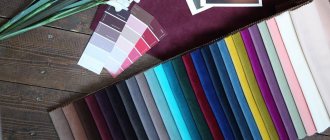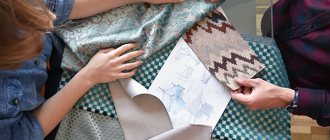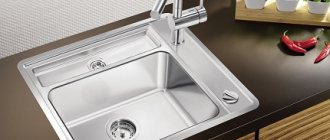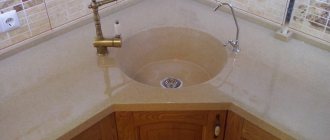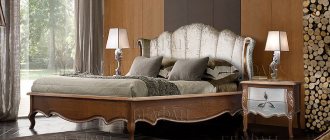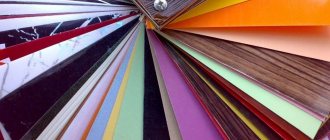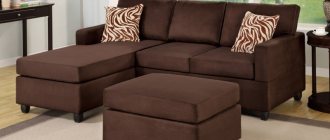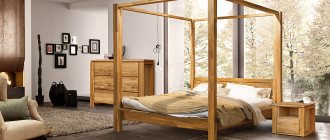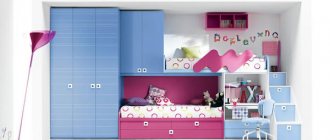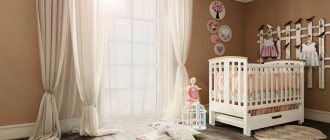Sleep is a very important part of every person’s life; health, mood and general condition throughout the day directly depend on the quality of night’s rest. Therefore, it is important to choose the right not only filling, but also fabric for the pillow. It can create comfort or spoil the impression, and this is influenced by the use of successful or inappropriate material.
“The way you sleep is the way you live,” says popular wisdom.
A person spends most of his life sleeping, but sometimes he does not pay attention to the details that can make this process more enjoyable.
What to choose?
When the question arises, which fabric will be better, you should focus on the purpose of purchase and the filling of the pillow. The insides of the product are divided into two types: natural and artificial. The owners rely on their own vision on what to choose. But the natural option is increasingly being left aside, especially when it comes to using such a pillow in public places (hotel, inn, motel).
To make this accessory comfortable and durable, there are several factors that are worth paying attention to.
The fabric must be durable, and at the same time soft, breathable and hygroscopic.
The reason for the preference for artificial substitutes is the absence of allergens inside them, even after time, mites and dust. Plus they are easier to wash and dry. And natural filling is usually chosen for the soul by those who want to be closer to nature, and their health allows it.
It is very important to select the appropriate material for sewing a bedspread.
The material should be both dense and soft.
Soft seats for chairs
When the choice of decorative pillows for the sofa is over, the question arises of choosing linings for chairs and armchairs. Especially if there is a dining table in the living room.
Soft seat cushions on chairs add special charm and decor and are very convenient to use.
Small chair pads. You can easily sew them yourself. To do this, follow the instructions below.
- Prepare the necessary materials - scissors, foam rubber, nylon threads, buttons or zippers, Velcro. A monochromatic color scheme is suitable for chairs.
- Measure the parameters of the chair, cut out the foam rubber according to the shape and cover it with fabric.
- Draw a pattern on paper. It contains several details. One blank with a one-piece strip, and the second - without it.
- Next, transfer the drawing to the canvas, cut it out and sew around the perimeter with a sewing machine, except for one side, which will include foam rubber. Sew a zipper or buttonholes to the left side.
- We sew Velcro onto the part that will be attached to the chair.
- Insert the “inside” and secure it to the chair.
Options
The most popular fabric options.
- Satin.
A type of cotton product, it has quite high strength, and it is attractive in appearance, as it gives off a glossy appearance.
Satin is a cotton fabric made by weaving twisted threads.
- Batiste.
It is light, soft, but prone to rubbing.
Batiste is a light and transparent fabric.
- Jacquard.
This is not a simple weaving of different types of fibers; it has strength, elasticity, breathability and aesthetics.
It is dense, elastic, and allows air to circulate well.
- Percale.
It is relatively hard-wearing, breathable, and tends to retain heat.
High-strength cotton fabric made from untwisted threads.
- Flannel.
It retains heat, but quickly loses its former appearance due to the appearance of pellets. The owners are happy with it: comfortable, soft, pleasant.
Flannel is a cotton, wool or wool blend fabric of plain or twill weave.
- Bamboo.
It is natural, has a glossy surface, and is believed to have an antibacterial effect on the environment.
Bamboo is a natural material, similar in quality to silk.
- Linen.
It is thin, durable and wear-resistant, usually woven together with cotton.
Linen is the oldest fabric; it used to be difficult to obtain, but now it is easily available.
- Tick or tick-inlet.
Chinese material, gaining popularity in the world, it is dense and soft, but it is important to choose the right one.
Teak is a dense natural fabric intended primarily for sewing mattress covers, bedspreads, covers, and awnings.
Sometimes wool is also selected (preferably with an admixture of delicate fibers, so as not to sting) to relieve unhealthy conditions, such as headaches or joint problems.
Constructing patterns for various types of pillowcases
The most popular pillows have dimensions of 50x70 cm. Traditionally, the cover or clasp is located on the smaller side of the pillowcase. Since the product is quite simple, there is no need to make patterns. Sewing patterns are built directly on the fabric from the wrong side.
Above is a simple pillowcase with a scent for a 50x70 cm pillow. The canvas will consist of two parts of 70 cm, a small part of 5 cm and a 22 cm wrap. 1.5 cm strips are provided on both edges of the part for processing.
On the smaller side, it is recommended to allow 2.5 cm allowances for seams. The result will be a solid rectangle with dimensions of 170x55 cm.
Pillowcases measuring 70x70 cm are created in a similar way. Only one of the sizes changes.
The pattern includes two parts of 70 cm, a small part of 5 cm and a 22 cm wrap. On each side, 1.5 cm is provided for processing the edges. On the smaller sides there is another 2.5 cm allowance. The final rectangle measures 170x75 cm.
Pillowcases with a zipper are cut out without unnecessary elements in the form of a smell. Below is an example of a product diagram for a pillow with dimensions of 50x50 cm.
Pillowcases for decorative pillows are created in the same way. The only differences are in size, since such products are often smaller than regular sleeping pillows and usually have a square shape.
How to choose a base, fiber weaving?
The main selection of fabric for a pillow should be based on the type of filler. The more delicate it is, the less you can worry about the fact that the weaving of the fibers will not be dense enough. For down and feathers, you should use a bedspread with a strong weave, as the elements will try to crawl between the threads and prick the sleeper. And gentle options, such as synthetics, will not fit through cambric, which is what people prone to allergies are very happy with.
For feather holders for pillows with natural filling, dense cotton fabrics with synthetic inclusions are more suitable.
The main quality of a bedstead is strength.
Decor of chair products
Often the chair is opposite the sofa or to the side, but this does not mean that it should be identical to the sofa. On the contrary, even a chair can be decorated with an original model with patterns, for example an owl or a family photo print.
If you need to sew it yourself, then follow the following algorithm of actions.
- Prepare - fabric, lace or embroidered ribbons, zipper or buttons.
- Draw a sketch, cut it out.
- Secure the sides with pins so that they do not move.
- Sew three sides.
- Sew a zipper or buttonholes into the last side. It is better to use a zipper, so the filler will be closed more securely.
- Pack the interior space tightly with filler. Close the zipper, now you're done.
- Decorate with decor.
How to choose fabric
The selection of material does not end with its composition and weaving density; other characteristics are also important. This is the airiness of the fabric, the thickness of the canvas, the looseness of the product and how it feels to the touch. But it is desirable that it also complements the properties and purpose of the filler itself. If it must retain heat, be ventilated and be soft, since it is made from a wool mixture, then it is better to select material with similar qualities.
Products sold in stores are sewn using special technology on industrial sewing machines.
For a synthetic pillow (with microfiber)?
This option is not particularly demanding; it holds its shape on its own and does not jump out in all directions. Therefore, the cover can be sewn or purchased from the fabric that is most pleasant to the touch. Many people prefer satin or microfiber; cotton is also held in high esteem, including those mixed with other types of fibers.
Before buying fabric, you need to decide on the size of the pillow and their quantity.
For down pillow
Down has such properties that it has to be shaped and prevent small elements from falling out. That is, there must be a napkin material that has strength, weaving density and wear resistance. For this, teak may be the best option; it has all these qualities.
Thanks to a special production technology, unlike ordinary fabric, teak does not allow feathers to pass through.
For silk pillow
Silk pillow fabric is often diluted with synthetic additives. This is necessary to prevent the product from jumping out. After all, pure silk has average properties, except for the peculiarity of a slippery surface.
As for colors, it is preferable to choose a light or plain fabric.
For a pillow with wool
Wool fabric for a pillow tends to prick, but does not come out through the threads of the material. Therefore, you can use satin for this, it is soft and smoothes out the unpleasant sensations from wool. Although any option that is most comfortable for the owner will do.
Choose a fabric that will be pleasant to the skin, allow it to breathe and will help quickly remove moisture.
Room style
The strict classic style goes perfectly with geometric elements - circles, rectangles, squares.
Modern. A variety of printed models made from linen or rigid burlap are suitable here.
For high-tech, decorating with metal threads is suitable. Sewing is best done from silk, leather and linen. The model should be chosen with strict shapes.
Pop art allows the use of various figures and materials. These are hearts, animals, letters, etc.
The rustic country style will not tolerate strict products. Knitted and embroidered items are ideal here. Also coloring in checkered patterns or nature patterns.
In safari style, animal prints with fur decorative elements will look harmonious.
Retro – goes well with prints on products, especially vintage photographs and paintings.
How to sew a pillow (bedsheet) with your own hands
To sew a pillow yourself, you can’t do without:
- the mass filling it;
- fabrics;
- needles;
- sewing machine;
- contrasting threads, in the color of the base.
In order for the pillow to last as long as possible, it is necessary to pay attention not only to the quality of the material, but also to the sewing technology.
After determining the required dimensions of the future pillow, you can make calculations for the fabric. Multiply one of the sides by two, then add a couple more centimeters on each side for the seam. Then follow these steps:
- Measure and cut fabric.
- Fold in half, wrong side up.
- The outline should resemble the finished product.
- Finish open sections with edging (it is better to round the corners).
- Do not add a couple of tens of centimeters to one of the sides in order to place wool, padding polyester, feathers, etc. inside.
- Do this by first turning the product right side out.
- Sew up the remaining part using the “back needle” technique.
The pillow (napper) is ready for use.
Third stage
DIY ready-made pillowcases for sofa cushions
When everything is ready, turn the pillowcase inside out and proceed to decoding. Please note that the parameters of the pillowcase should be a couple of centimeters larger than the base. This makes it easier to remove when cleaning.
Photos of our sofa cushions in the interior
How to care for pillows?
Pillows with natural interiors are more difficult to care for than synthetic ones. Almost all artificial materials can be washed in a washing machine manually or even normally without any hassle. You must read the directions label.
The range of fabrics from which a pillow can be made is huge - for every taste and budget.
But the fabric for various types of pillows does not require much effort if it is cotton or linen. But wool and silk must be cleaned using special products and at the correct temperature level.
The main thing is to choose the right materials and scrupulously approach the task at hand.
What forms are there?
The shapes of soft products vary from hearts to champagne bottles. A standard copy is a square or rectangle, with sides 50x50, 70x20 or 45x45.
Variety of sofa decorative pillows
Children's bedrooms are often decorated with different figures - letters, animals, pencils, geometric shapes.
Original decorative pillows for a children's room
In exclusive interiors, unusual soft objects are sometimes found - “travel bag” or “fried eggs”.
Tools
The main tool of any seamstress is, of course, a sewing machine. But if you don’t have one, then you shouldn’t be upset; a decorative pillow can be made by hand, it just takes more time. Referring to the list below, prepare the following tools:
- Set of needles.
- Scissors.
- Marker, chalk or pencil.
- Paper for patterns.
- Knitting needles or hook (if a knitted product is being made).
- Iron.
- Tailor's meter.
Set of tools
